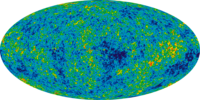Observational cosmology

Observational cosmology is like exploring the vast universe through a big telescope. Scientists use powerful telescopes to look at stars, galaxies, and other celestial bodies to learn more about our universe. It's like having a big eye that can see things that are far away.
When we look at the stars, we can see what they are made of, how far away they are from Earth, and how they move. We can also study light from different parts of the universe to learn about its age, how it has changed over time, and how it will continue to change in the future. Scientists use this information to piece together a bigger picture of how the universe came to be and what its future might hold.
Observational cosmology is a lot like a puzzle. Scientists gather data from different parts of the universe and try to fit the pieces together to make sense of it. Just like fitting puzzle pieces together, this process takes a lot of time and patience, but it can help us understand the world around us in new and exciting ways.
When we look at the stars, we can see what they are made of, how far away they are from Earth, and how they move. We can also study light from different parts of the universe to learn about its age, how it has changed over time, and how it will continue to change in the future. Scientists use this information to piece together a bigger picture of how the universe came to be and what its future might hold.
Observational cosmology is a lot like a puzzle. Scientists gather data from different parts of the universe and try to fit the pieces together to make sense of it. Just like fitting puzzle pieces together, this process takes a lot of time and patience, but it can help us understand the world around us in new and exciting ways.
Related topics others have asked about:
